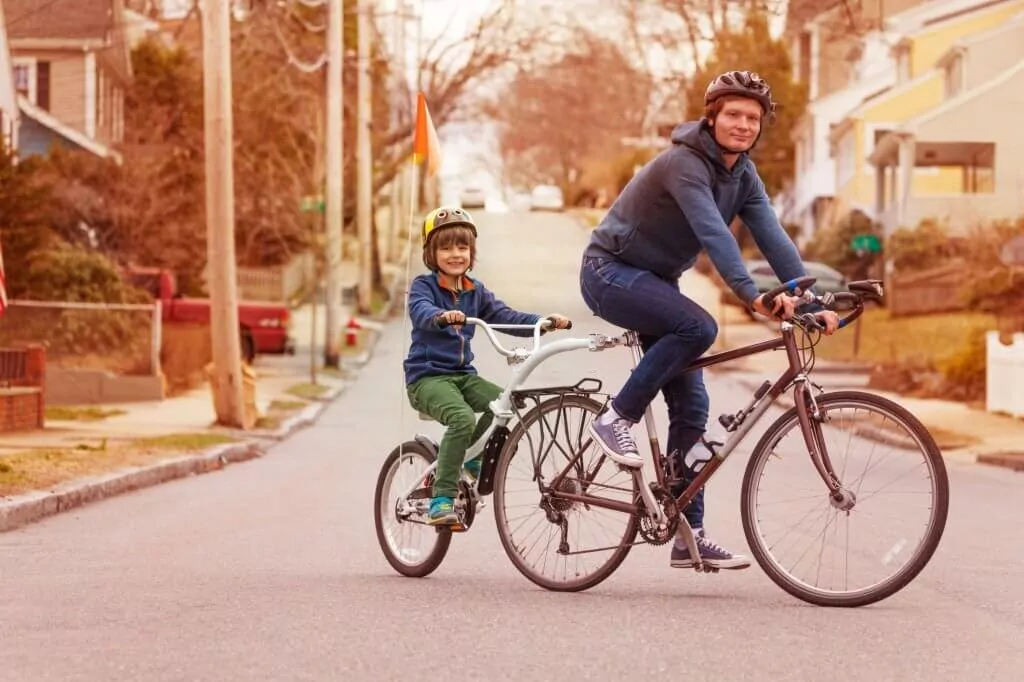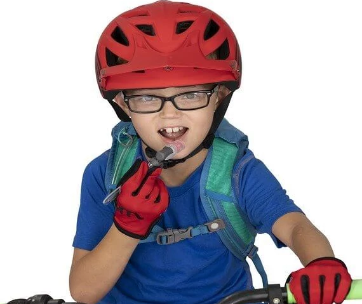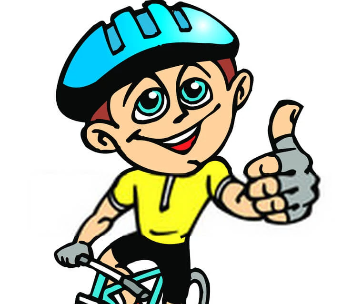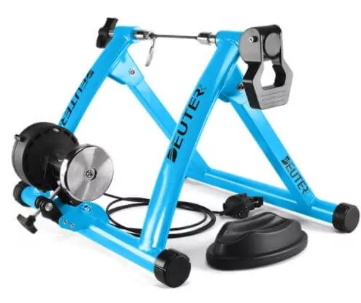A parent asked us, “how do I tow my child’s bike behind my bike?” and for a moment, we thought about the various kids’ bike towing devices that we have reviewed on our website.
When children are tiny, parents can easily go cycling with them by buying and installing a child bike seat. However, as naturally expected, children grow and become taller and heavier. In no time, they no longer fit in child bike seats. So, to cycle with them, parents get them their own bikes.
However, children are unlike adults. Most of them do not have the endurance to pedal their bikes, even for distances that most adults consider short or moderate. For this reason, many parents opt to pull or tow their kids on their own bikes. If you are one such parent and want to know how to tow your kid on their bike, we have all the information you need.
This post teaches the different ways to tow your child’s bike safely.
Different Ways to Tow Your Kid on Their Own Bike
Biking with kids, whether for bike camping, commuting, or bike touring, has never been as easy as it is today. All this is possible thanks to the innovation of various manufacturers who are forever on the forefront of bringing various towing devices.
You can use these devices to attach your child’s smaller bike to your adult bike.
Towing devices for kids’ bikes are grouped into two main categories – flexible tow devices and fixed or rigid tow devices. Here is a closer look at each one of them.
1. Flexible Tow Devices
The most commonly used flexible tow device is a bungee-style rope. Given that this type of rope is flexible, it allows the kid to easily maneuver their way around rocks and other obstacles along the way. This is unlike rigid tow devices that follow on the path of the lead bike.
Flexible tow ropes are perfect for mountain biking and off-road trails because of the movement freedom they give to your kid. The best flexible tow ropes are also suitable for use on narrow paths and bumpy terrain. The best thing about flexible tow devices is that they are easy to attach between the leading bike and the child’s bike.
However, it is important to keep in mind that flexible tow ropes are mainly designed for those kids who can confidently ride their own bicycles. Also, note that your kid’s bike will not slow down and halt when you apply your brakes. In this case, your kid will also need to apply their brakes.
Likewise, when riding downhill, your kid will also have to press their own brakes to reduce their pace. Or else they will end up in front of you. This, however, does not mean that flexible tow ropes cannot be used for downhill rides. In such cases, the rope should be attached the opposite way; have it attached to your kid’s saddle and your handlebar. Connecting the rope allows you to cycle downhill together while preventing your kid from gaining a lot of speed.
The only issue with flexible tow devices is that they are not good enough for cycling together in urban areas with great traffic. With a flexible tow device, you will find it difficult to stop your kid’s bike in case of an emergency.
All in all, these kinds of tow devices should be utilized in safe surroundings, away from areas with heavy traffic, and are generally best for mountain biking. Below are two examples of flexible towing devices.
Tow-Whee
If you often hit the trails with your child and find that your rides are usually filled with laughter when cycling downhill and tantrums when cycling uphill, then this is a great choice. The tow-Whee is an incredible budget option. It is simply a flexible tow rope, somewhat long like a bungee cord, and it works really well on cycle paths and trails.
The tow-Whee permits you to tether to a second rider without worrying about the risk of the cord dangling into the wheels when the two bikes get close to each other when cycling. It also adds a gentle progressive pull as the two bikes get further away from each other. And since your kid will still be riding their own bike even when attached to the lead bike, this will considerably build their off-road bike handling skills like maneuvering around obstacles and pedaling.
What’s more, the length and tension of the tow-Whee has been specially customized to suit adventure sports. So, your kid’s bike will be maintained far back enough to view the trail but near enough to tackle technical terrain.
It is important to note that the tow-Whee should only be used uphill, and it has to be detached from the bikes before proceeding to cycle downhill. Also, professional mountain bikers should note that this particular tow rope can be used with dropper posts and seat posts. The tow-Whee can even be used as a dog lead.
TRAX MTB
This flexible towing device is similar to the above-discussed tow-Whee in that it connects a kid’s bicycle to a lead with the help of a cord. In this case, however, what is used is a thin and retractable Kevlar cord. Weighing an amazing 95 grams, you will barely notice that this cord is connected to your bike; it is extremely lightweight. You can carry it in a jersey pocket or bag when not in use.
Another great thing about this tow rope is that its installation is fast and straightforward. You will not need any tools to install it. The TRAX MTB is designed to be connected to the seat post in the adult bike using three zip ties. A really simple knot right at the end of the cord allows for fast and easy fastening and unfastening on all standard bicycle stems or handlebars.
One more thing worth noting about this flexible tow device is that it is straightforward to disconnect, and this can even be done while still riding. That said, if your riding partner is the feisty type, always keep an eye on them to make sure that they are still connected!
2. Fixed Towing devices
Fixed tow devices are rigid devices featuring a hitch that secures onto the adult bike’s seat post or a separately connected rack. If the fixed tow device is a tow bar, its opposite end can be connected to the front tube on your kid’s bike.
In most scenarios, these kinds of tow devices tend to call for much more in terms of installation in comparison to tow ropes, for instance, and will normally be accompanied by hardware to be attached to the bicycles.
Under this category, commonly known as trail-a-bike or tag-along bikes, you will find towbars, standard tag-along bikes, and recumbent trailer cycles. However, only the towbar allows you to haul a kid when they are riding their own bike.
Fixed tow devices are a safer option if you and your kid intend to ride on city streets. This is because they will always keep your kid directly behind you. In addition, you can simultaneously halt both bikes by pressing on your brakes as your kid’s bike is directly attached to them yours. Nonetheless, when braking, it is safer to gradually press the brakes to avoid being forced forward by the force of inertia from your child’s bike.
The main downside to fixed towing devices is that they give your little one little freedom, given that they have absolutely no control over their bike’s direction. This, however, can be convenient if you are riding on a road with a lot of bends and bumps. Additionally, the little freedom is appropriate for younger kids who are not quite ready to bike by themselves.
What’s more, some fixed towing devices allow you to tow your child’s bike independently. This comes in handy after you have dropped your kid off at their school. Below are two good examples of fixed towing devices for kid’s bikes:
Trail-gator bicycle tow bar
This rigid towing device transforms an ordinary kid’s bike into a towable trailer bike. To use it, simply unclip the device from the stored position on the lead bicycle, extend it, and then attach it to the receiver mounted on the kid’s bike.
And once your kid’s is properly attached, its front wheel gets lifted off the ground, and a strong stabilizing bar inhibits ant movement of the handlebar, leaving you in absolute control of steering. With the trail-gator in position, your kid then decides if they want to pedal or coast while towed.
FollowMe tandem
We absolutely recommend FollowMe Tandem, which is a fixed towing device as it features an impressive design and high-quality components. It also works very well with smaller bicycles. It is a great option when cycling on busy roads and streets as it ensures that your little is always close behind you, not letting them veer into the dangerous road.
The FollowMe Tandem works by lifting the front wheel of the child’s bike off the ground below once connected. For this reason, the kid can’t steer their bike but are stable and completely safe. The FollowMe Tandem also works simultaneously with a rear child’s seat or pannier rack.
Even though its installation takes somewhat longer in comparison to other devices, as soon as the components are secured in place on both bicycles, they remain in place and are easy to tuck out of the way. As a result, this particular towing device is appropriate for small and medium-sized bikes.
Keep in mind, however, that the FollowMe Tandem is expensive. It costs about $300. It is, nonetheless, worth every dollar on its price tag. It is straightforward to use once it has been installed, and it is really sturdy. It is also lightweight, safe, and durable, and it has a two-year warranty.
Things To Consider When Selecting a Towing Device for Kids Who Ride Their Own Bike
Certain aspects need to be taken into serious consideration when selecting the most suitable towing device for a kid(s) who rides their own bike. These considerations include:
1. The environment you intend to ride in
Different towing devices are better suited to different terrain and riding environments. Having an understanding of where you will often cycle will assist in your decision-making. The best option is a tow frame in traffic environments, like the FollowMe Tandem, because of its low hub-to-hub attachment. In mountain biking, a great option is a tow rope, like the tow-Whee. Tow bars and tow frames can also be used for mountain biking.
2. The child’s ability to ride their own bike
When towing a child with the help of a bike-to-bike towing system, the child should be able to ride their own bike with some confidence at least. Most bike-to-bike towing options have a minimum age limit that must be followed for safety purposes. Tow frames, for instance, can be used on kids between the ages of three to nine years who are not really confident biking in all sorts of terrain.
Tow ropes, on the other hand, require the kid to be really good at riding their own bike. Specifically designed for off-road surroundings, a tow rope should only be used with confident riders.
3. Bike attachment points and compatibility
Every towing option requires you to have a bit of understanding regarding the bikes being used. Various things about bicycles make them challenging to use when attempting to mount or attach things to them. Tow bars are, for instance, incompatible with carbon seat posts. They require a clear route from the seat post over the back wheel to the kid’s bike. Tow ropes, on the other hand, are compatible with virtually all bikes.
4. Towing frequency and duration
Bike to bike towing is better suited for intermittent towing, assisting your kid only when need be. Some scenarios that might require towing include going up and over challenging terrain or riding further for long distances.
However, suppose you are looking to tow in a more permanent manner for whichever reasons (your kid is not really confident about their cycling skills or the ride is on a busy path). In that case, a tow frame is the best choice. In such cases, the best trail bikes come in handy as they feature special additions and modifications to their structure for this purpose.
5. Storage while still riding
The towing device is often carried as you ride alone or independently with bike-to-bike towing. Tow bars are stored on the adult bicycle when not in use. It retracts, pivots down, and then clicks onto a bracket on the hub of the back wheel. It does not interfere with any riding whatsoever and is completely safe when in this position.
About size, tow frames are the biggest. When not used, it folds back and gets hooked to the rails beneath the adult bike seat. Tow ropes, on the other hand, are very small, light in weight, and so very easy to carry around. Simply put it in a bag or loop it over the body when not in use.
Frequently asked questions
If you have further questions on how to pull kids while on their own bikes, you can check whether these FAQ answers can satisfactorily or at least address your concerns.
Why tow your child’s bike?
Towing your kid’s bike means longer bike rides that might otherwise be too much stress for your little one to handle. One of the significant benefits of pulling your kid is that it helps them navigate challenging trails quickly. Towing also allows you to cycle at a higher pace than if your kid was riding by themselves.
Lastly, towing devices allow you to cycle with peace of mind knowing that your kid is directly behind you, particularly in busy and high traffic areas.
Is towing a child’s bike safe?
If the connecting device between both bikes is secure, it is entirely safe to tow a child’s bike, provided that the young one knows how to pedal and balance and their own.
What is the most suitable terrain for cycling with a tow bar?
This all depends on the tow bar’s quality. For example, the trail gator is suitable for paved roads, whereas the FollowMe Tandem can be utilized on dirt trails.
What is the most suitable terrain for cycling with a tow rope?
Most tow ropes were explicitly designed for use on mountain bikes. However, they can also be utilized for road rides and long climbs.
What is the appropriate age to use a tow bar?
Tow bars are recommended for young riders on 12-inch and 16-inch bikes, particularly those still learning to pedal. They can also be used on 20-inch bikes. They are, however, not suitable for use on 24-inch bikes or adult bicycles.
What is the appropriate age to use a tow rope?
Tow ropes need the kid to be in total control of their bicycle while being towed by the lead bike. The kid should also be able to navigate their bike around different obstacles and press their brakes to prevent bumping into the other bike. Therefore, even though a tow rope can be used on children of all ages, the suitability of its use relies more on the kid’s biking skills than their actual age.






Comments